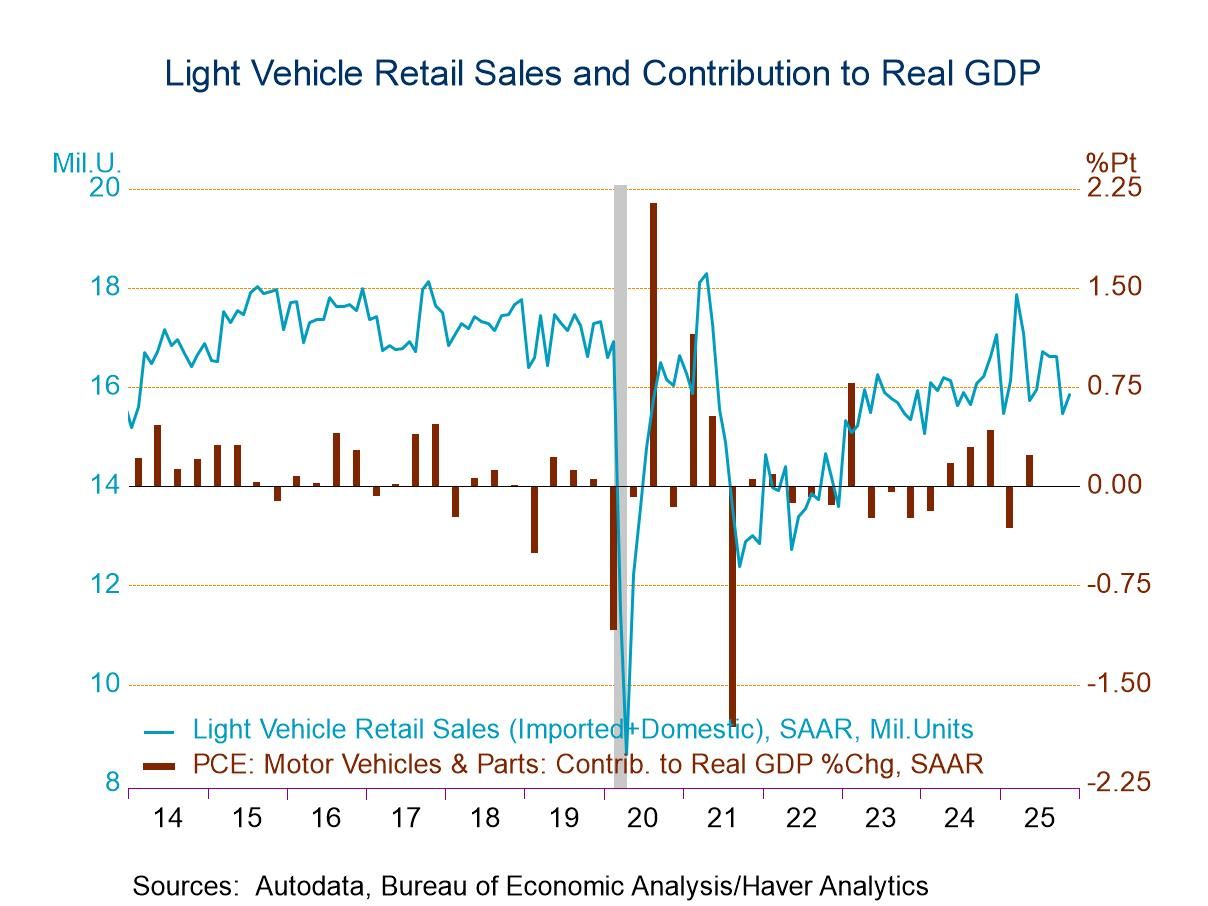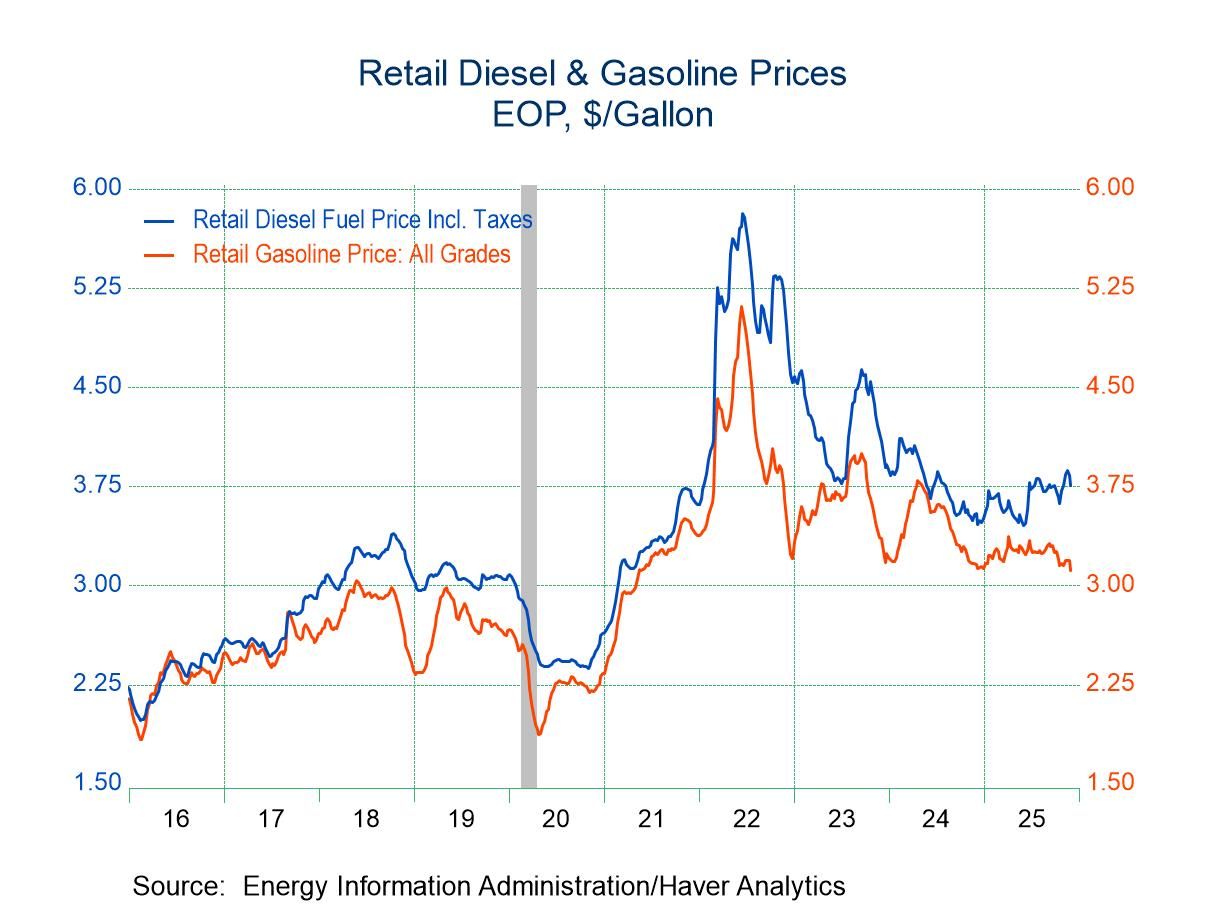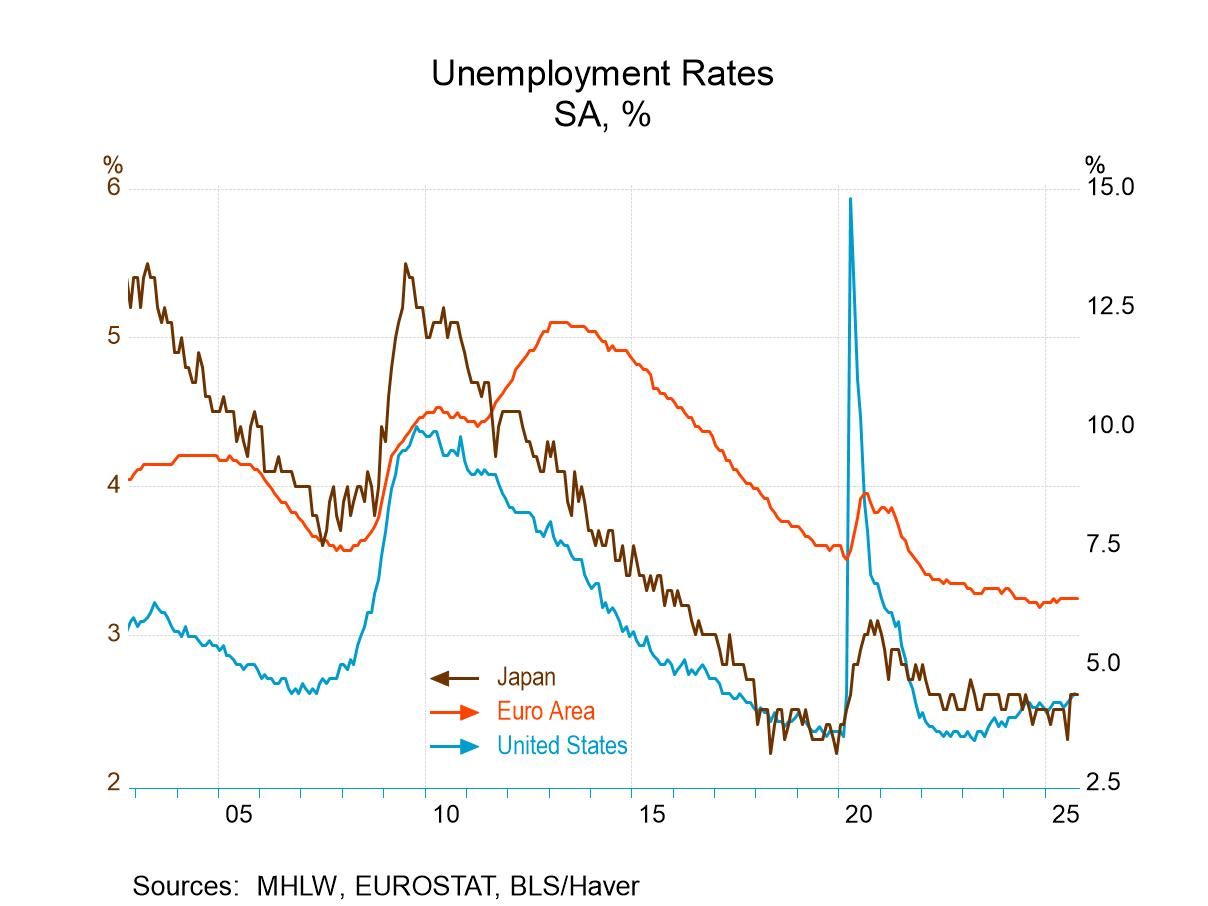 Global| Jun 18 2025
Global| Jun 18 2025Charts of the Week: Conflict, Energy and Constraints
by:Andrew Cates
|in:Economy in Brief
Summary
Financial markets have been jolted over the past week by a sharp escalation in geopolitical risk. The sudden intensification of hostilities between Israel and Iran—marked by missile strikes and retaliatory air operations—has reignited fears of a broader regional conflict with global consequences. This flare-up has driven a visible spike in geopolitical risk indicators (Chart 1), unsettling investor sentiment at a moment when markets were still digesting the implications of US protectionist trade policies. As tensions mount, the economic shockwaves have been rippling outward: oil prices have rebounded sharply (Chart 2), global shipping costs have climbed sharply along key maritime routes (Chart 3), and capital markets are once again grappling with an unpredictable macro landscape. Iran’s strategic importance—both as a holder of nearly 10% of global oil reserves and as a key player in energy shipping lanes such as the Strait of Hormuz—underscores the vulnerability of global energy security (Chart 4). But the implications are not just immediate. Over the medium term, higher real energy prices have already been weighing on living standards and growth outcomes across many advanced economies (Chart 5), with the data pointing to a clear inverse relationship between real energy costs and gains in per capita GDP. Compounding this is the slow, structural erosion of natural capital—soils, forests, water systems—which continues to undermine long-run economic resilience and productive potential (Chart 6).
Geopolitical risks and trade policy uncertainty Geopolitical tensions have risen sharply following the recent escalation of instability in the Middle East. As shown in Chart 1, the Caldara-Iacoviello Global Geopolitical Risk Index has surged to its highest level in over a year, reflecting mounting fears of broader regional conflict and potential disruption to critical global energy supply routes. In contrast, the US Trade Policy Uncertainty Index has eased in recent weeks, reflecting a temporary de-escalation in tariff rhetoric and signs of diplomatic engagement with key trading partners. This divergence underscores the shifting risk landscape: while the trade policy narrative has stabilised somewhat, geopolitical volatility has returned as a dominant force, complicating the outlook for global coordination, capital flows, and supply chain resilience.
Chart 1: US Trade Policy Uncertainty Versus Global Geopolitical Risk

Oil process and global growth surprises The most obvious and immediate channel for these shocks has been oil. As shown in Chart 2, the global oil price has risen sharply in recent days, with the rebound leading a broader repricing of growth and inflation risks. The oil price in chart 2 below with a seven-week lead and has lately been tightly correlated with the inverted Citigroup global growth surprise Index. Notably, the correlation remains strongly negative, indicating that rising energy costs could sap global economic momentum.
Chart 2: Crude oil price versus Citigroup’s global growth surprise index

Global shipping costs Freight rates have also surged in response to the Middle East conflict. Chart 3 shows the Baltic Dry Index and the Capesize Index, both of which have jumped materially in recent days. These indices, which capture the cost of transporting bulk goods such as metals, grains, and energy, are sensitive to perceived risk in major shipping lanes—including the Red Sea and Strait of Hormuz. As insurance premia rise and some routes are avoided altogether, freight costs are climbing.
Chart 3: The Baltic Dry index and the Baltic Capesize index

Global oil reserves The strategic significance of the Middle East—particularly Iran—can be seen clearly in chart 4. Iran specifically accounts for over 9% of global proven oil reserves, and the broader Middle East (excluding Iran) holds nearly 40%. That means nearly half of the world’s known oil reserves sit in one of the most geopolitically volatile regions on the planet.
Chart 4: Global oil reserves broken down by region

Energy costs and economic growth The role of energy as a key driver of economic growth is arguably often underappreciated. However, its influence over economic performance is evident in the chart below. High real energy prices tend to discourage energy consumption, which in turn can suppress per capita GDP growth—unsurprising given energy’s central role in virtually all forms of economic activity, from manufacturing and transportation to household consumption. This dynamic has been particularly pronounced in the Euro area. Major economies such as Germany, France, and Italy have experienced sharp increases in real energy prices, accompanied by relatively subdued per capita GDP growth. In Germany’s case, this has been exacerbated by the rapid shift away from nuclear and Russian gas toward renewables—a transition that, while essential for long-term sustainability, has introduced near-term supply bottlenecks and cost volatility. More broadly, these energy price spikes are partly attributable to supply-side disruptions, many of which stem from geopolitical tensions and instability.
Chart 5: Real energy prices versus living standards

Natural capital Beneath the surface of these immediate geopolitical shocks lies a deeper, slower-moving erosion: the decline of natural capital. As Chart 6 shows, renewable natural capital per capita has been falling steadily for over two decades, while non-renewable natural capital has stagnated. In contrast, produced capital has surged, and human capital has only modestly increased. This imbalance reflects a global economy that has continued to accumulate physical and financial assets while depleting its ecological foundation. The result is a structurally less resilient growth model, more exposed to shocks like climate volatility, resource scarcity, and geopolitical conflict over critical inputs like water, minerals, and land.
Chart 6: Global capital per capita by asset category

Andrew Cates
AuthorMore in Author Profile »Andy Cates joined Haver Analytics as a Senior Economist in 2020. Andy has more than 25 years of experience forecasting the global economic outlook and in assessing the implications for policy settings and financial markets. He has held various senior positions in London in a number of Investment Banks including as Head of Developed Markets Economics at Nomura and as Chief Eurozone Economist at RBS. These followed a spell of 21 years as Senior International Economist at UBS, 5 of which were spent in Singapore. Prior to his time in financial services Andy was a UK economist at HM Treasury in London holding positions in the domestic forecasting and macroeconomic modelling units. He has a BA in Economics from the University of York and an MSc in Economics and Econometrics from the University of Southampton.






